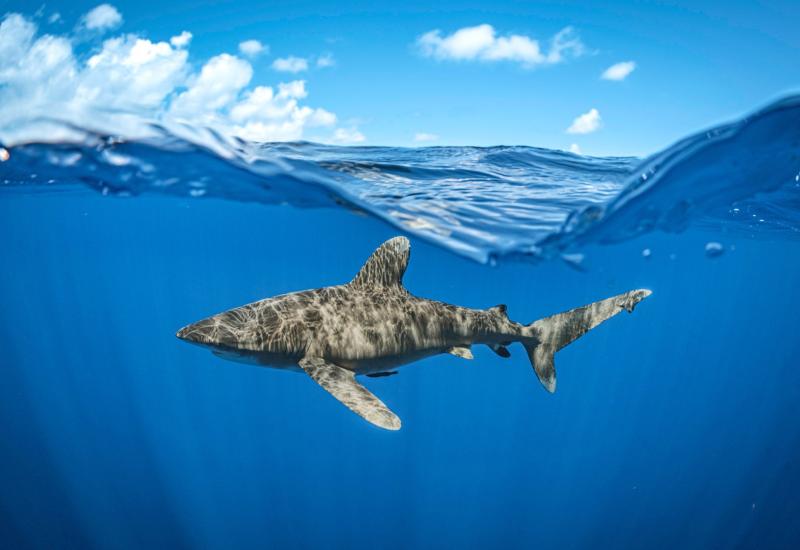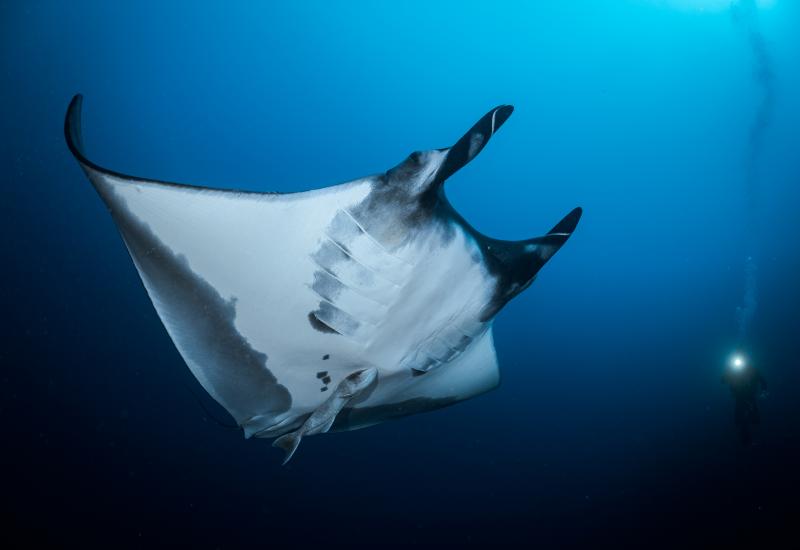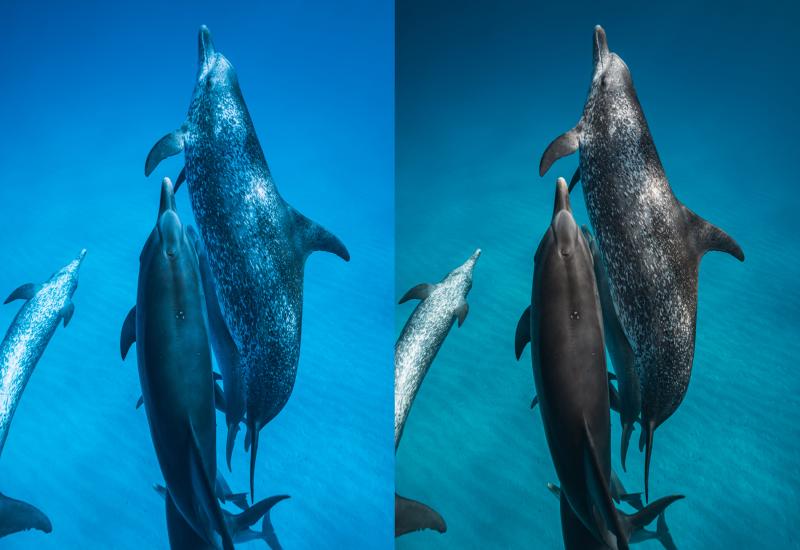11 Amazing Underwater Photos That Will Make You Want To Travel The World
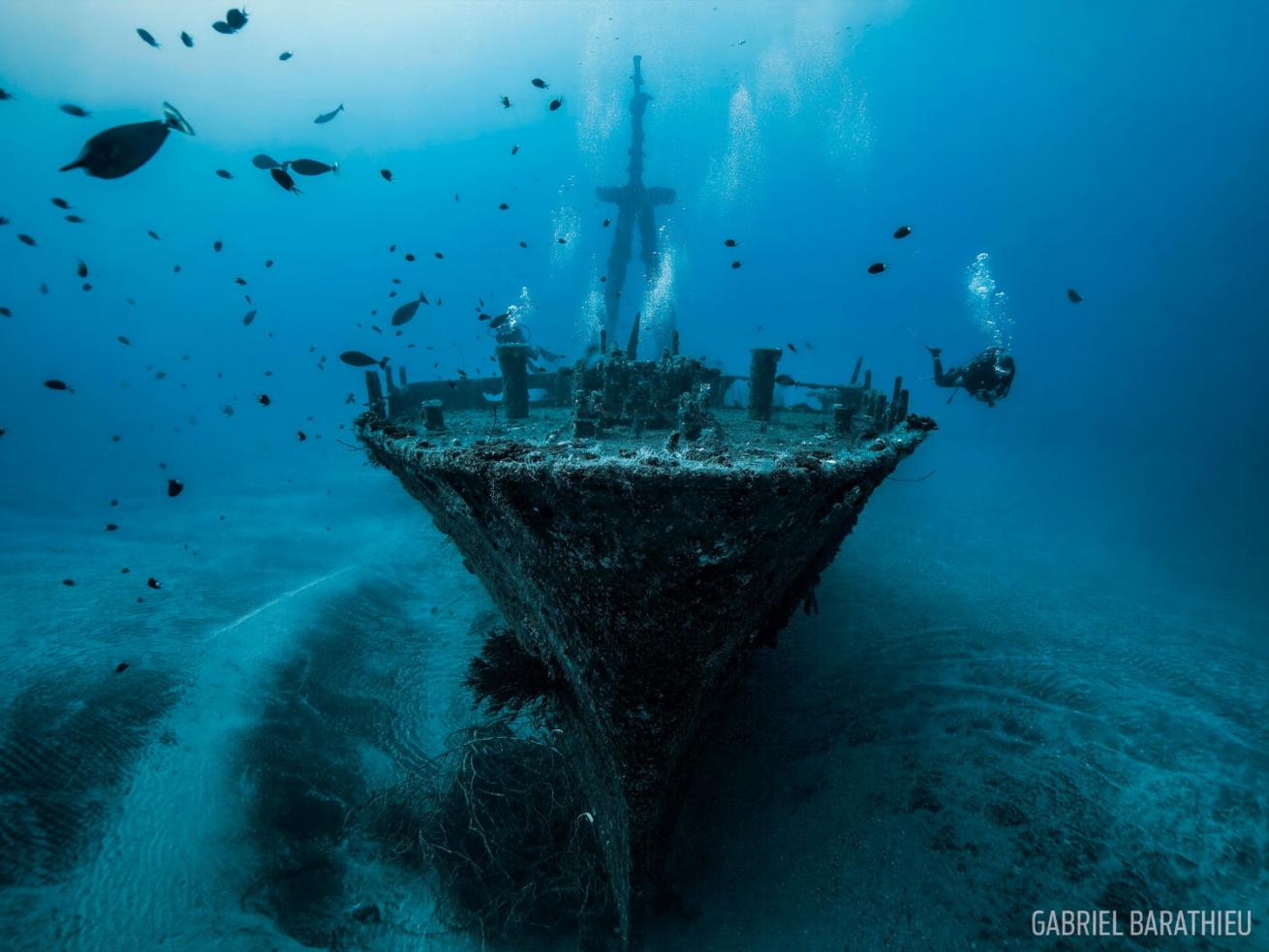
Gabriel Barathieu
Hai Siang Shipwreck
Off the western coast of Reunion Island, the Hai Siang shipwreck lies nearly 200 feet below the surface. Formerly an illegal fishing vessel, the 196-foot Formosan boat was seized and sunk as an artificial reef in 1980. Since then, it has become rife with marine life, including eagle rays, mola mola, sea turtles and hard and soft corals.
To capture this image, I used an ultra-wide-angle lens and positioned myself in front of the bow. I deliberately turned off my strobe to create the shot I was looking for. –Gabriel Barathieu
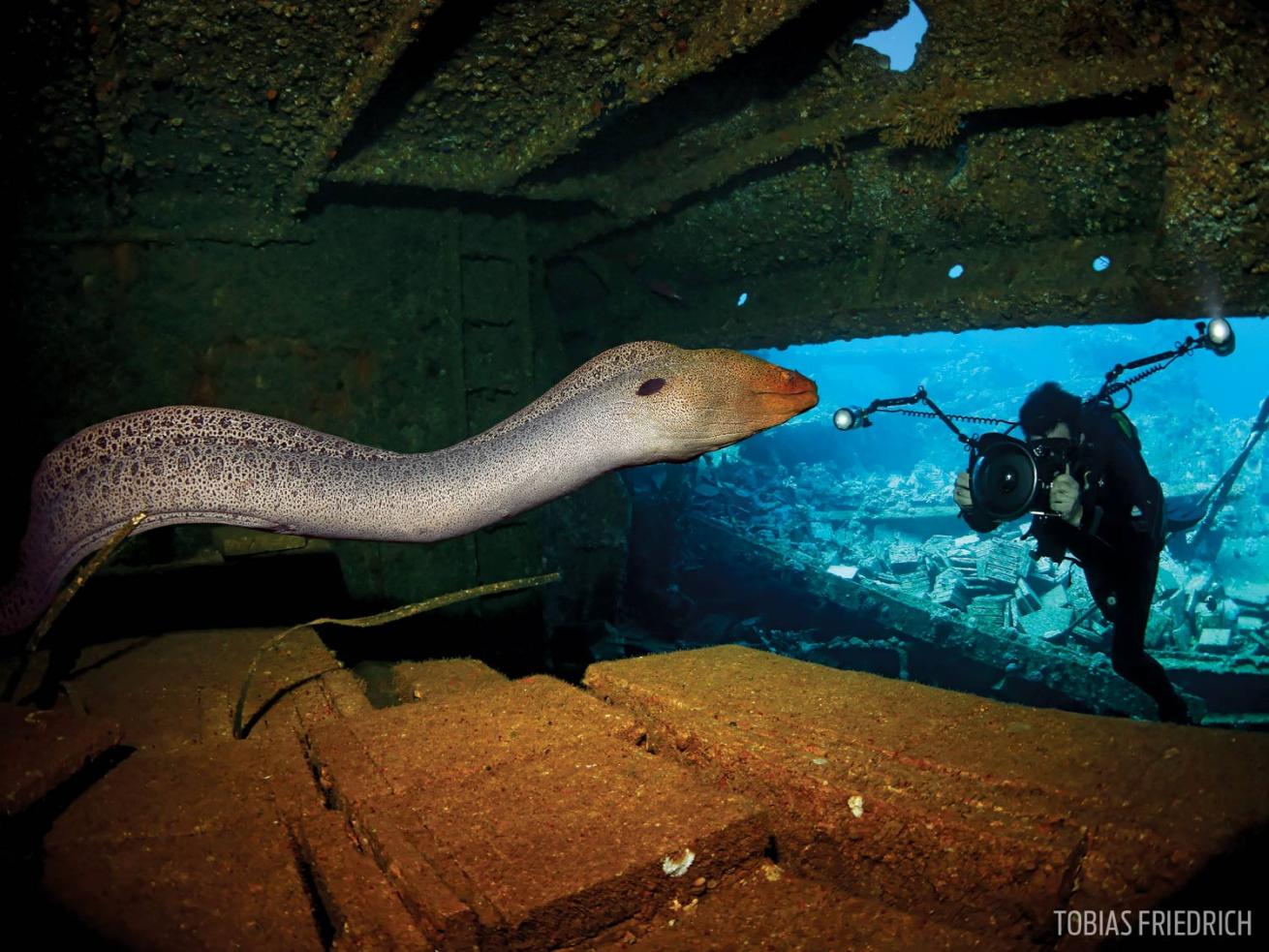
Tobias Friedrich
Slithering Surprise
Sometimes encounters happen that couldn't have been planned better. One of these rare situations took place at the Chrisoula K wreck in the Red Sea. I was situated by a door frame, waiting for another photographer, when suddenly a giant moray eel swam through the small space between the door and me. I was shocked at first, but I recognized that this could be a fantastic photo opportunity. I quickly swam after the eel and caught it right above some Italian floor tiles that were the ship’s main cargo when it sank in 1981. The encounter was so quick that I didn't have time to double-check my camera settings — luckily, they were just right. –Tobias Friedrich
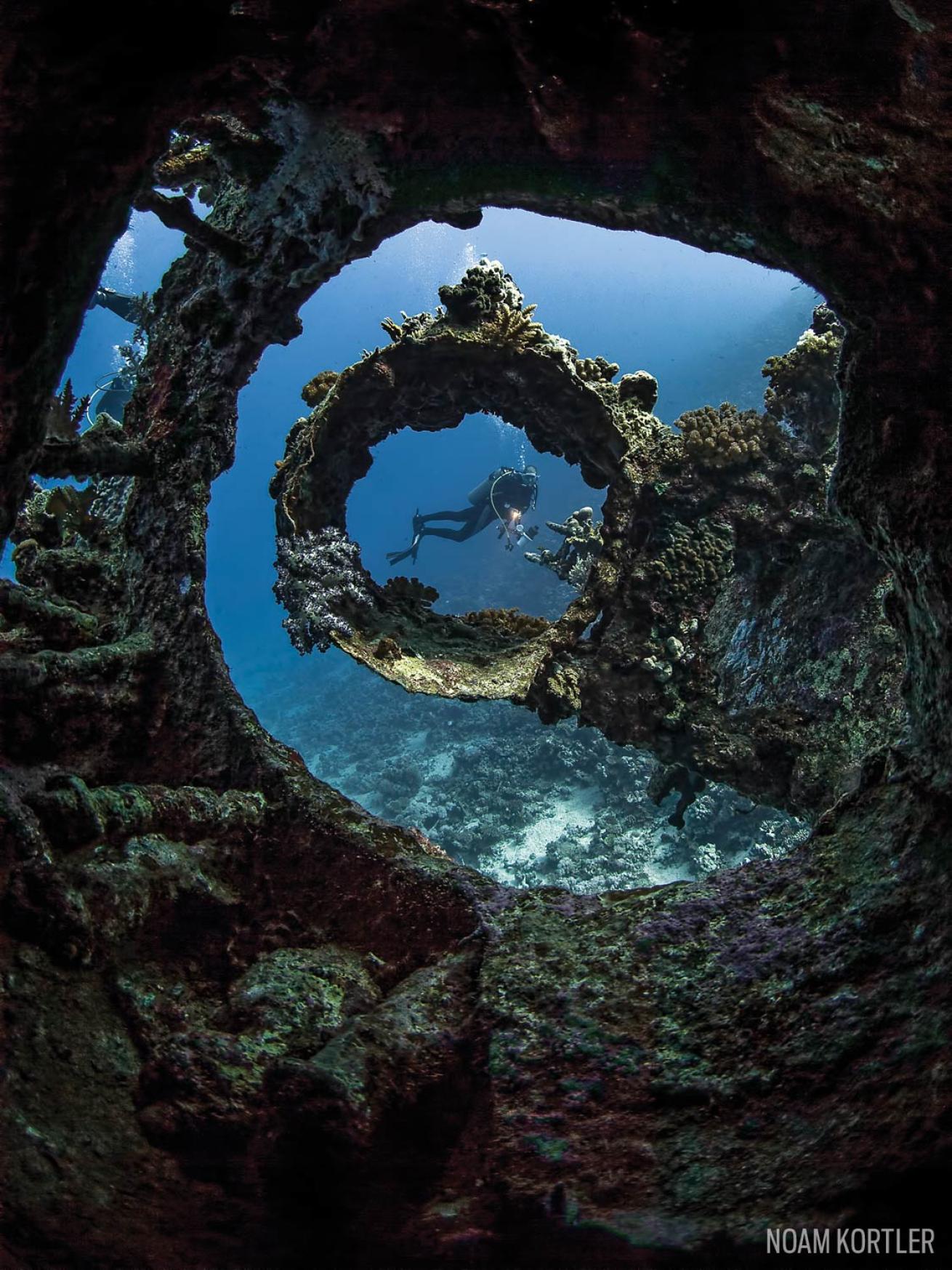
Noam Kortler
SS Carnatic
Beautiful as it is hazardous, the Shaab Abu Nuhas Reef is one of the most interesting dive sites in the Red Sea. Here divers can find the remains of four ships that crashed into the reef; the oldest of these is the SS Carnatic. The passenger ship ran aground in 1869, and subsequently split in half — killing 31 people. Despite the disconnect, the halves of the Carnatic sank juxtaposed; the 295-foot ship now lies on its port side parallel to the reef. I have frequently visited the Carnatic, and each time I have found a new angle to photograph the wreck. In this image, I was shooting from inside looking out. –Noam Kortler
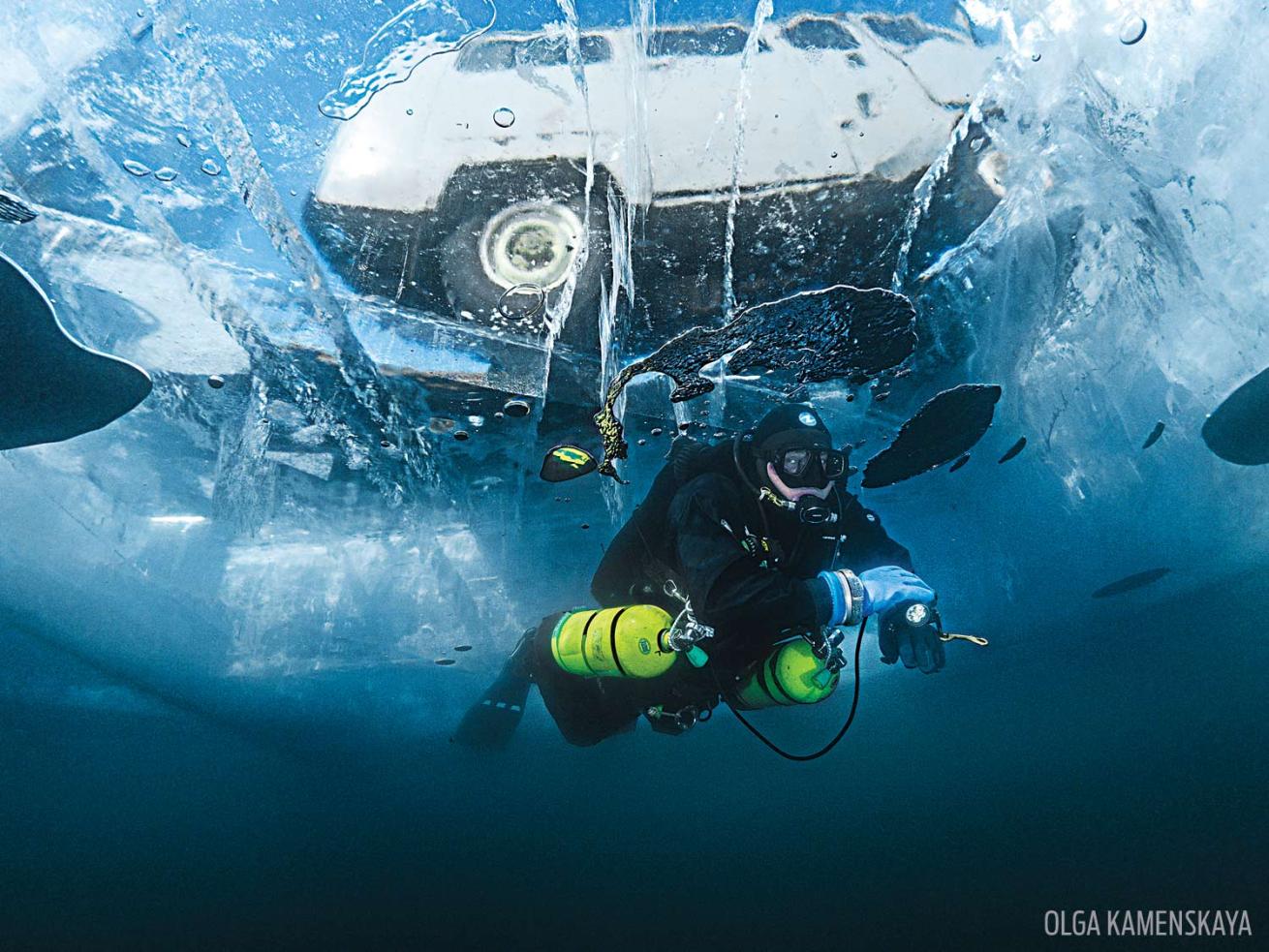
Olga Kamenskaya
Lake Baikal
Situated in southeast Siberia, Lake Baikal spans an area the size of Belgium. It is the world's oldest, deepest and largest lake, and contains 20 percent of all fresh, running water on the planet. It's so vast that Siberian people call it a sea. When its surface freezes, the ice sheet is so clear that it is possible to see right through it. The transparency is a result of its exceptionally clean water — in fact, it can be considered distilled. Minerals like calcium or sodium salts, which would other- wise make the ice opaque, are found only at very low levels here. The visibility makes Baikal a fantastic dive site, but few have the courage to withstand the near-freezing temperatures. Many people fear Baikal’s depths — in the breathtaking abyss, one feels like a tiny helpless bug in an immense world. But divers who take the plunge discover a magical underwater park. –Olga Kamenskaya
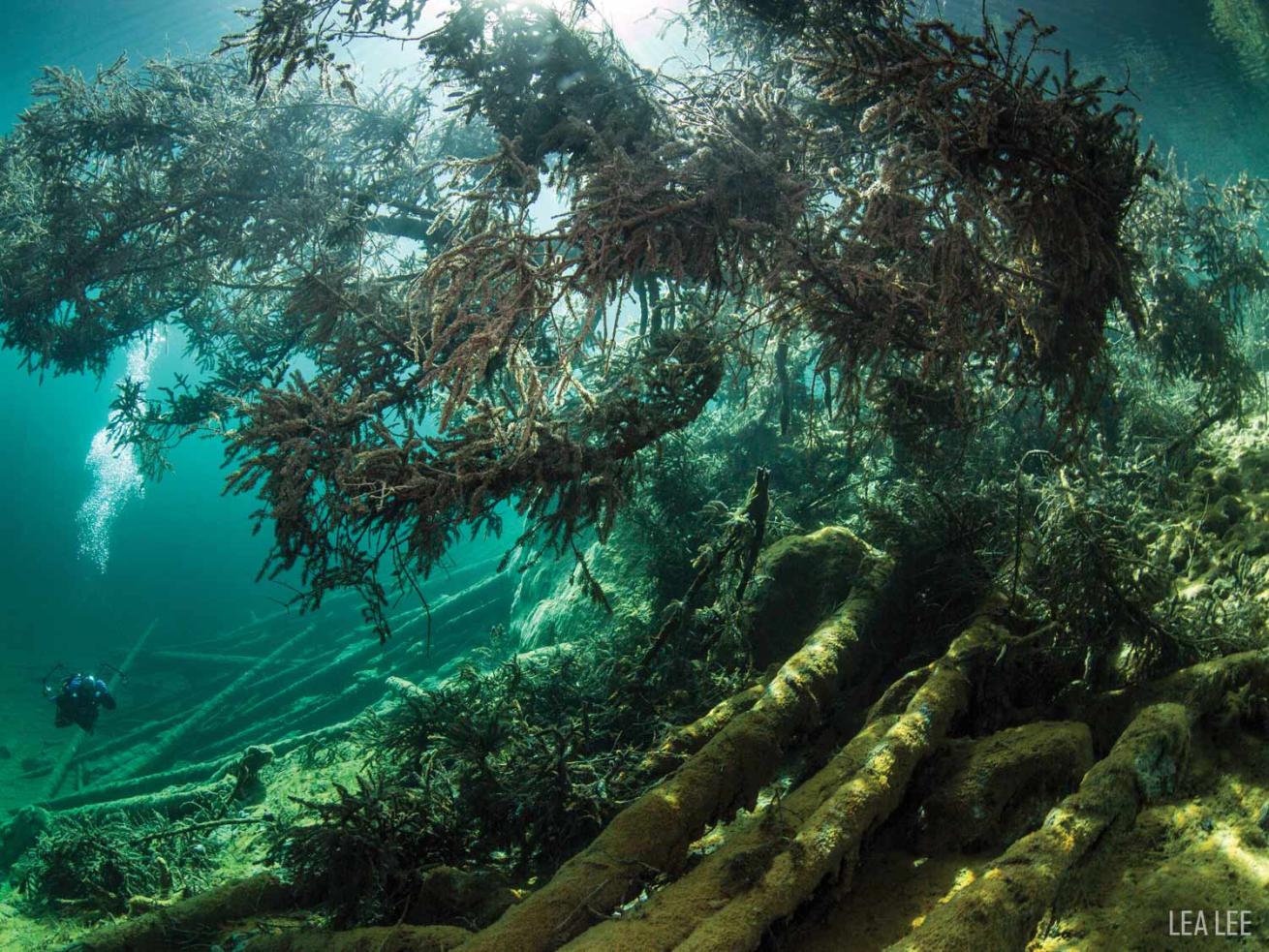
Lea Lee
Lake Fernsteinsee
Located not far from Sameranger Lake in Tyrol, Austria, is the otherworldly Lake Fernsteinsee. The delicate algae and plants covering the lake’s bottom take years to grow, so diving is strictly limited to those with excellent buoyancy control. The crystal-clear water has visibility of more than 130 feet, allowing divers to appreciate the logs, fallen trees and plants that make up this mystical world. It’s an underwater experience unlike anywhere else. –Lea Lee
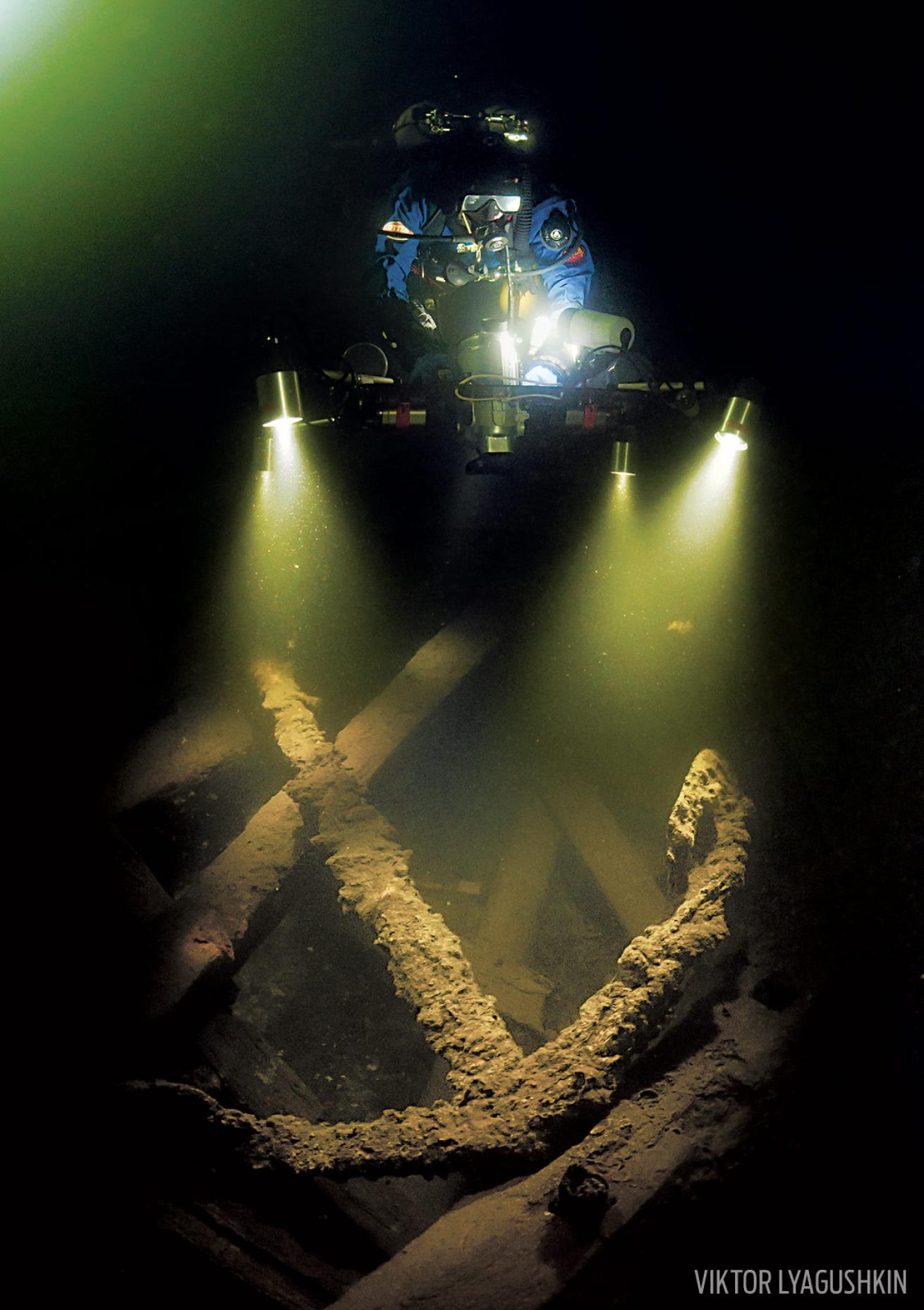
Viktor Lyagushkin
Tobias Enge Shipwreck
The Baltic Sea is far from hospitable: Cold and gloomy, its murky waters are often subjected to storms that cause hazardous swells. Gogland island lies in the east of the hostile sea, and its cape provides some protection from the elements — though a number of ships rest on its seafloor. Underwater archeologists exploring the cape identified this fragmented shipwreck as the Russian Navy galiot Tobias Enge, which crashed near Gogland on a stormy night in 1771. Researchers believe the ship went down after a failed attempt to round the cape of the island, leaving no survivors of the 45-person crew. –Viktor Lyagushkin
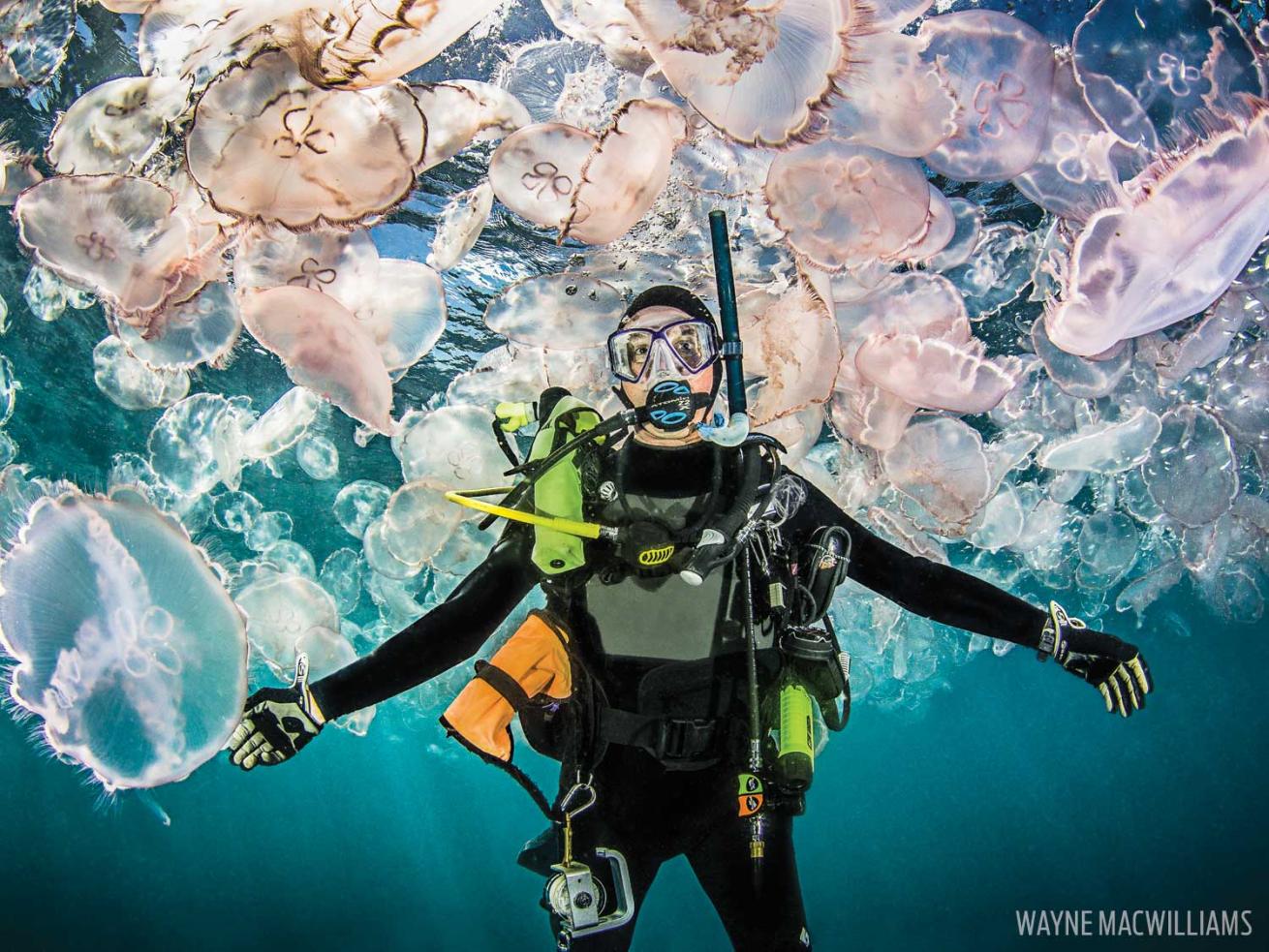
Wayne MacWilliams
Moon Jellyfish in Jupiter, Florida
Jupiter is located on Florida’s Treasure Coast at the point where the Gulf Stream comes closest to the shore. Here the reefs are magnificent and abound with sea life. Many of the visitors who come to enjoy the diving fail to take the time to explore the water column between the surface and the reef below — but that’s where you’ll find the true voyagers of the ocean. While traveling to a dive site, we discovered this swarm of moon jellyfish drifting north in the Gulf Stream. Swarms usually take place for mating or feeding purposes. I’m happy with either one; this discovery became our secret spot. –Wayne MacWilliams
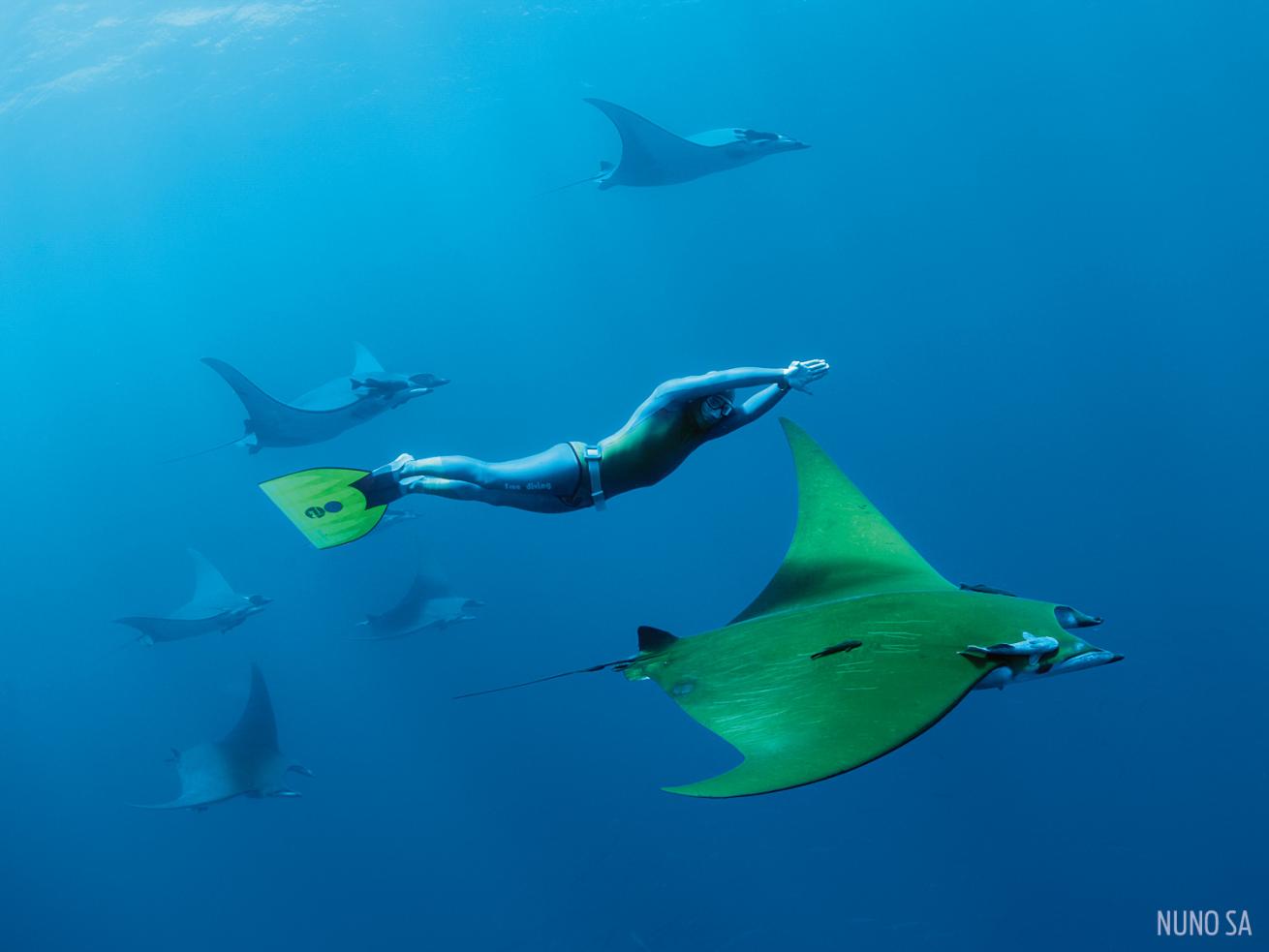
Nuno Sa
Devil Rays in Azores
Off the Azores, remote underwater mountains emerge from deep water in the Atlantic, creating the world’s best hot spots for diving with dozens of Chilean devil rays. Santa Maria is one of the smallest islands of the Azores — and also one of its best-kept secrets. Just 3 miles off the coast of Santa Maria, the seabed emerges from the depths, creating a unique dive spot for Chilean devil rays: the Ambrósio sea bank. Though capable of diving to depths of more than 3,200 feet, these amazing creatures also can be seen swimming in shallow waters, warming their bodies in the sunlight. –Nuno Sa
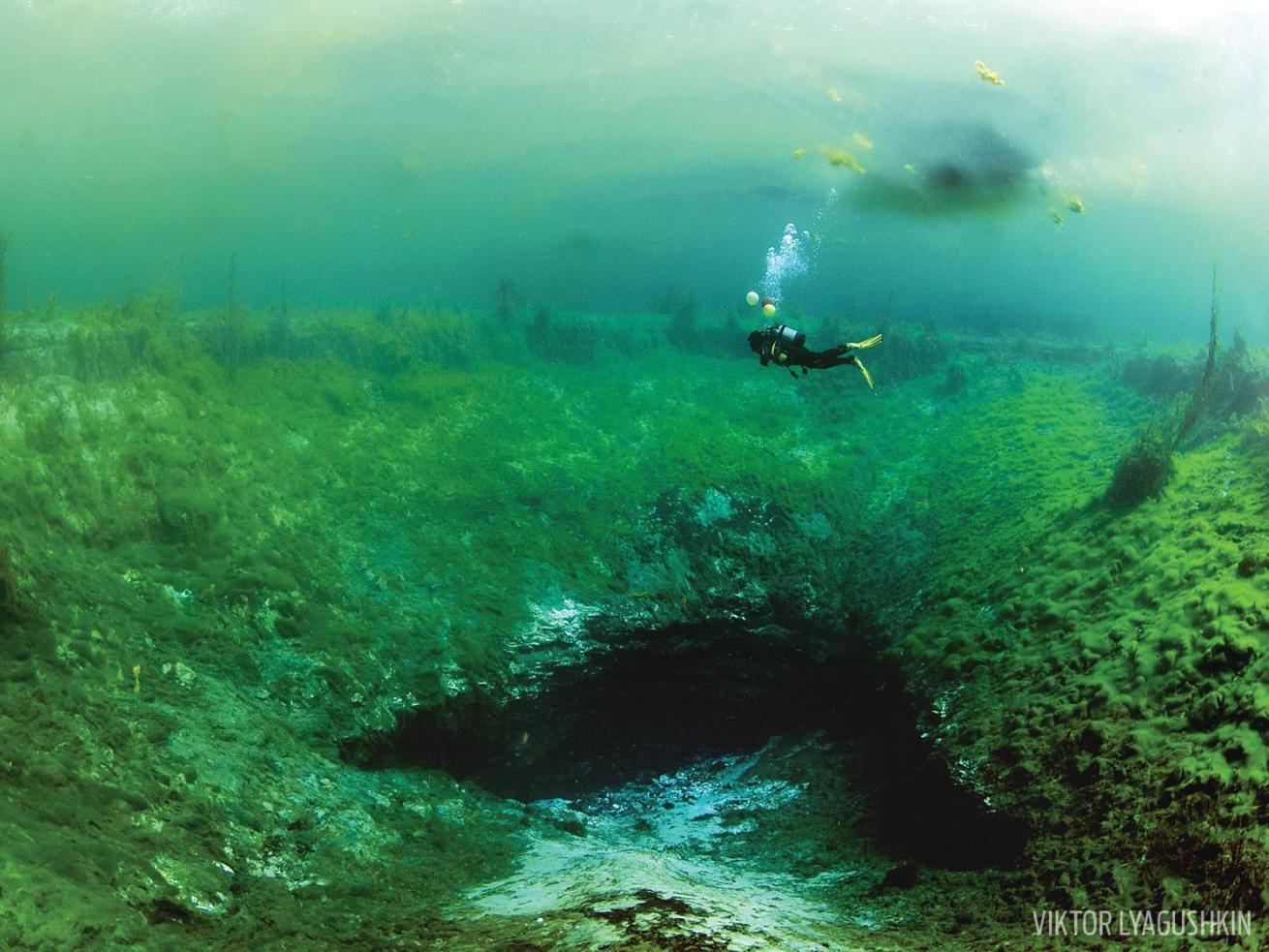
Viktor Lyagushkin
Vad Lake
Tucked away in Russia's Nizhny Novgorod region is the otherworldly Vad Lake. For hundreds of years the lake, which is about 325 miles east of Moscow, was fed by two springs. One of the springs has collapsed, creating an immense sinkhole more than 150 feet down. The pressure of water from the remaining spring is so strong that it creates a convex lens above the surface of the lake. In the summer, this surface layer can be warm and murky, but a 33-foot descent reveals water so transparent, it seems as if you're flying over land. To increase this sensation, I gave the diver brightly colored balloons to carry as he hovered above the blanket of green algae. –Viktor Lyagushkin
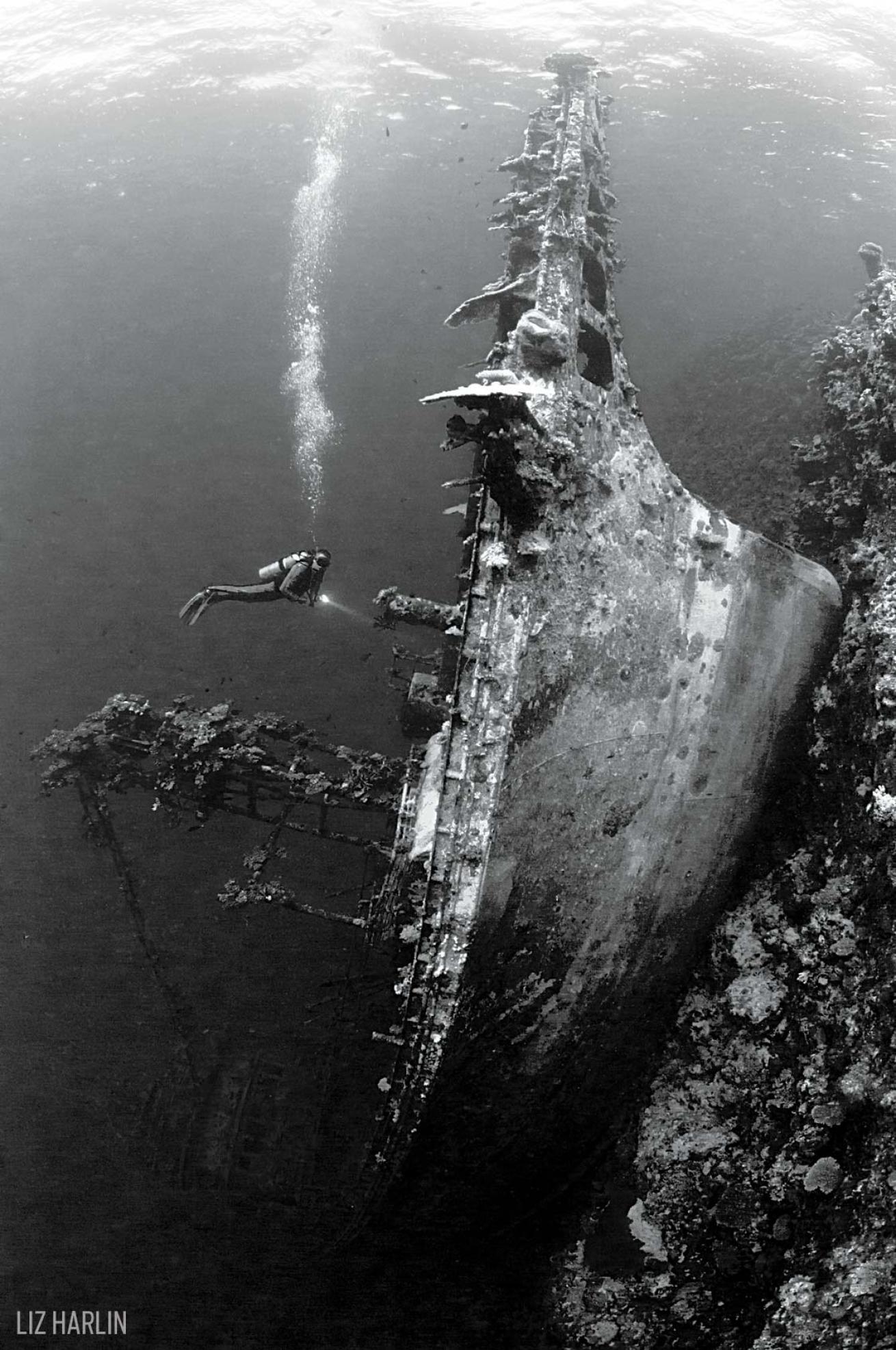
Liz Harlin
Taiyo Shipwreck
On its maiden voyage, this 300-foot fishing boat ran aground after striking a coral reef in Nono Lagoon, Solomon Islands. An attempt to salvage the ship went awry, and caused the Taiyo to sink vertically over the reef edge. Its bow sits just a few feet below the lagoon’s surface, and the ship remains fully intact. –Liz Harlin
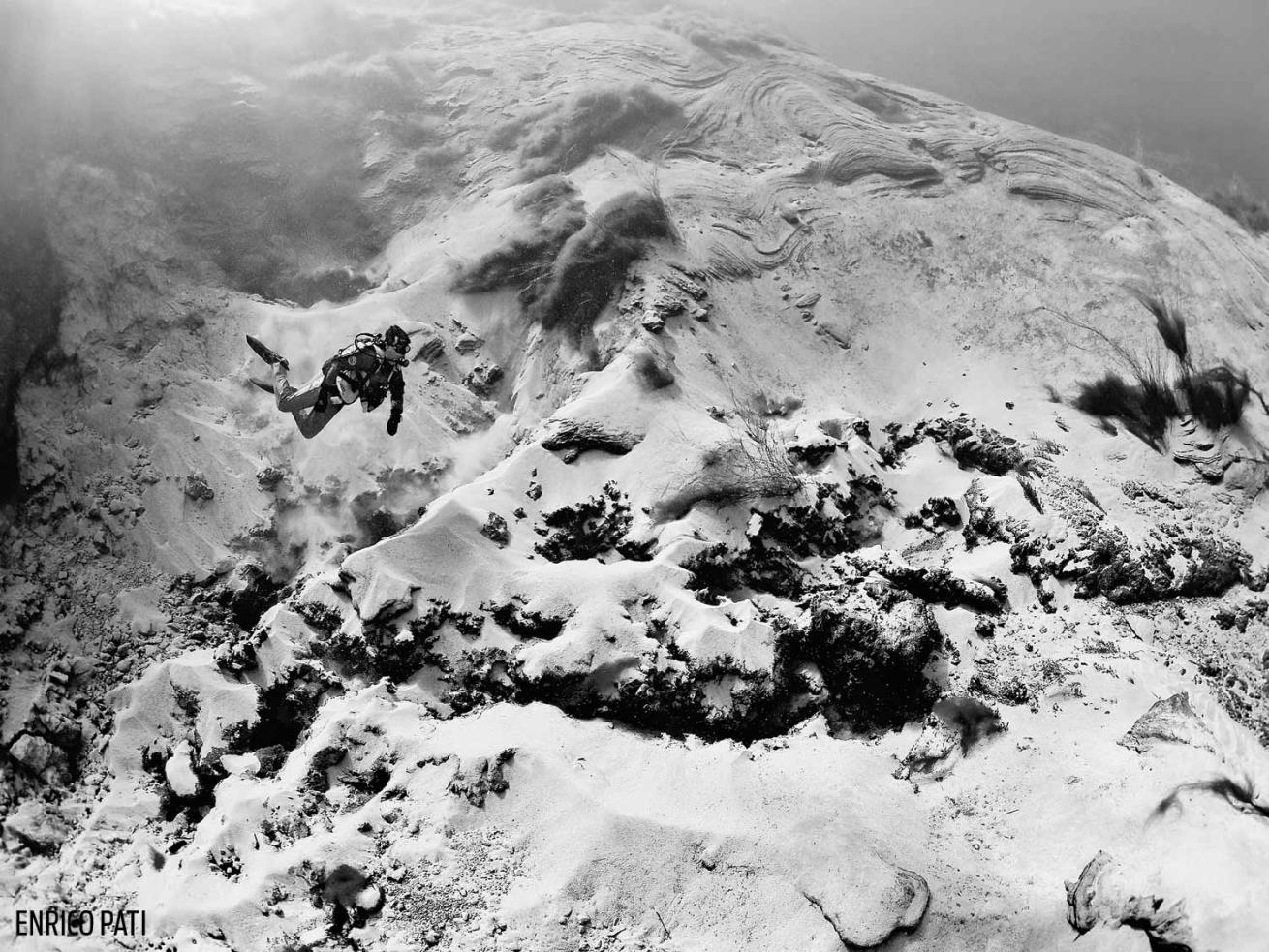
Enrico Pati
Chidro River
Not far from the southern Italian seaside village of San Pietro in Bevagna is a hypogean — or underground — river called Chidro (pronounced KEY-droh). Groundwater flows up from 50 feet below the surface, creating a pond 1,300 feet from the sea. (Local legend says the river was born from St. Peter’s tears, shed to expiate his guilt for denying Christ.) Divers arrive at this hidden gem after drift diving in the crystal river and walking through dense Mediterranean vegetation. The pond’s walls are encrusted with a white powder made of sand and calcium carbonate, carried by the current. The view from below is amazing — it’s as if you’re flying along a snowy mountain. – Enrico Pati


